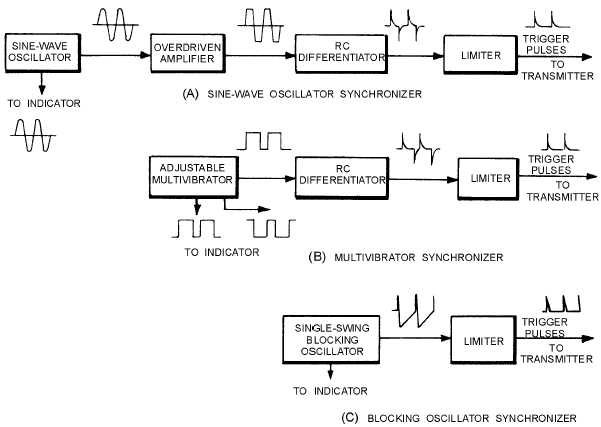2-5
Figure 2-2.—Timers used in externally synchronized radar systems.
Sine-Wave Oscillator Synchronizer
In the sine-wave oscillator synchronizer (figure 2-2, view A), a sine-wave oscillator is used for the
basic timing device (master oscillator). The oscillator output is applied to both an overdriven amplifier
and the radar indicator. The sine waves applied to the overdriven amplifier are shaped into square waves.
These square waves are then converted into positive and negative timing trigger pulses by means of a
short-time-constant RC differentiator.
By means of a limiter, either the positive or negative trigger pulses from the RC differentiator are
removed. This leaves trigger pulses of only one polarity. For example, the limiter in view A of figure 2-2
is a negative-lobe limiter; that is, the limiter removes the negative trigger pulses and passes only positive
trigger pulses to the radar transmitter.
A disadvantage of a sine-wave oscillator synchronizer is the large number of pulse-shaping circuits
required to produce the necessary timing trigger pulses.
Master Trigger (Astable) Multivibrator Synchronizer
In a master trigger (astable) multivibrator synchronizer (view B, figure 2-2), the master oscillator
generally is an astable multivibrator. The multivibrator is either ASYMMETRICAL or SYMMETRICAL.
If the multivibrator is asymmetrical, it generates rectangular waves. If the multivibrator is symmetrical, it
generates square waves. In either case, the timing trigger pulses are equally spaced after a limiter removes
undesired positive or negative lobes.



